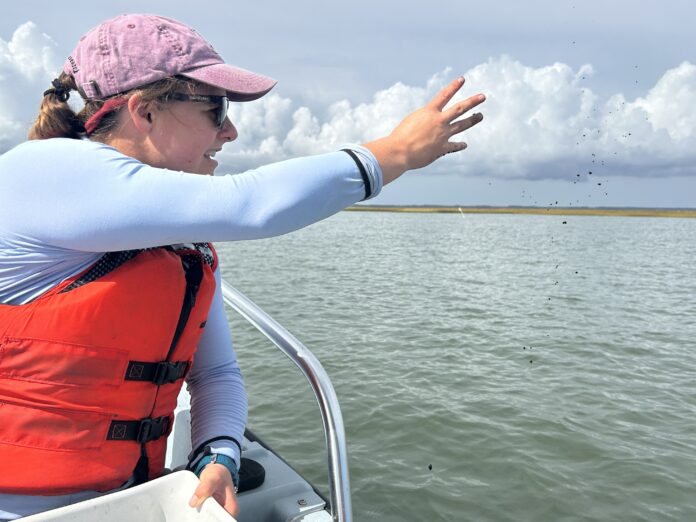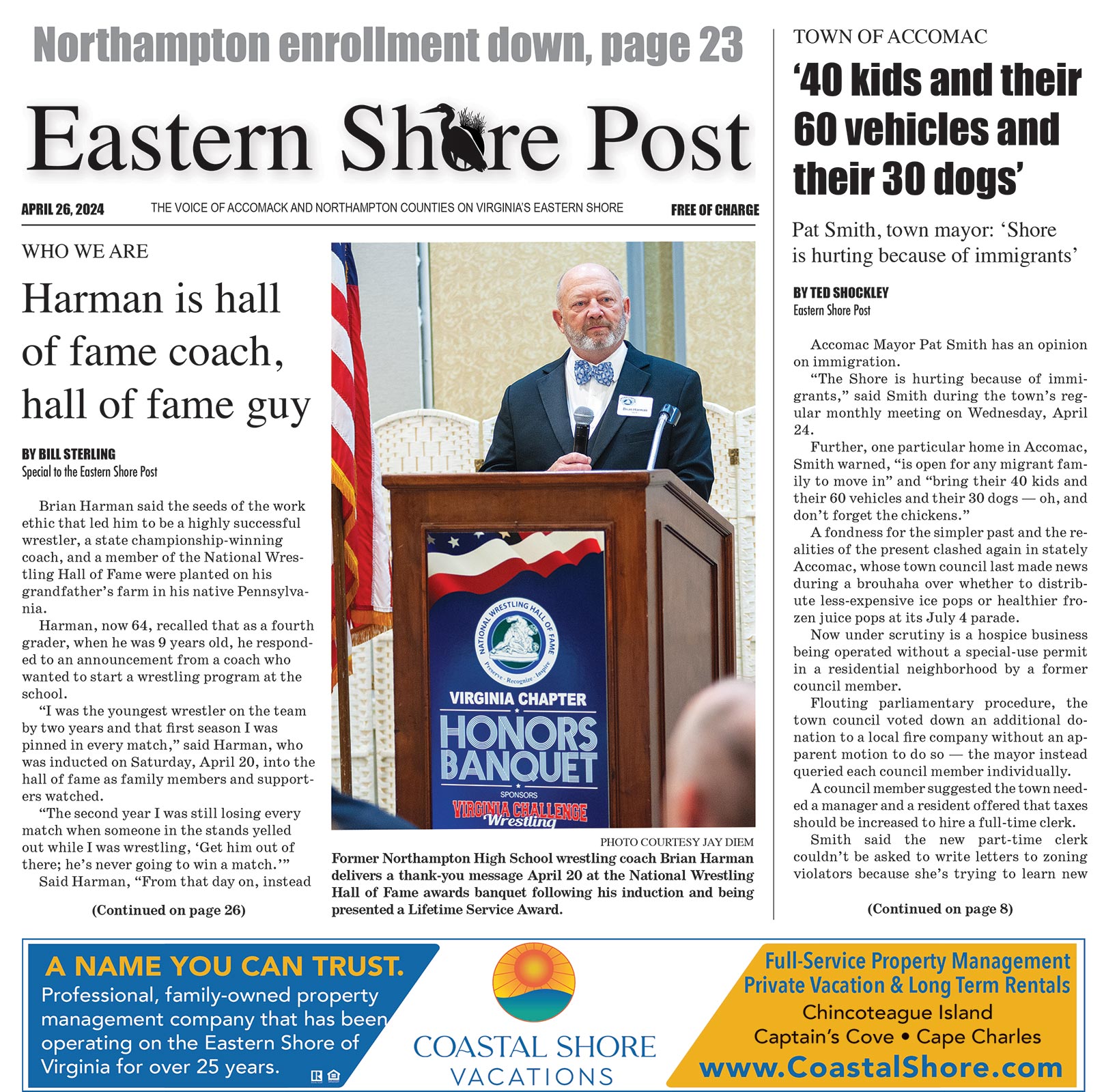
BY CLARA VAUGHN, Eastern Shore Post —
Scientists spent last week planting millions of seeds to replenish underwater grasses absent from the Eastern Shore’s seaside shallows for decades.
The effort is part of the world’s largest seagrass restoration project, which is expanding north after success bringing back thousands of acres of eelgrass in the Shore’s southern coastal bays.
“It’s not every day that you get to restore a whole ecosystem,” said Chris Patrick, director of the Submerged Aquatic Vegetation Monitoring and Restoration Program at the Virginia Institute of Marine Science.
“We’re collecting a lot of data from the get-go, so the hope is that we’ll get a much richer and fuller picture of how this changes over time,” he said of the new restoration site offshore from Wachapreague.
Vital habitat
The four-year project in and around Burtons Bay is funded by a $2.25 million grant from the National Oceanic and Atmospheric Administration, through the Virginia Department of Environmental Quality’s Coastal Zone Management Program.
VIMS is partnering with The Nature Conservancy on the project.
It aims to build on the success of seagrass restoration in other seaside shallows and collect before-and-after data that provide a clearer picture of how underwater grasses affect marine life and the surrounding environment.
Eelgrass provides crucial habitat for small fish, crabs, and bay scallops that use the underwater meadows as nurseries to hide from predators.
But around 1930, seagrass wasting disease rapidly spread and killed about 99% of eelgrass across the Atlantic Ocean, Patrick said.
Most areas recovered their underwater grasses within a few decades as circulating waters carried remaining seeds there, but Virginia’s coastal bays remained isolated, he said.
“Conventional knowledge was eelgrass wouldn’t grow here, but a chance event near Wreck Island (offshore from Oyster) proved that wrong,” Patrick said.
“It took 70 years for that to occur naturally,” he said.
An environmental success
Seagrass restoration projects are not typically successful, Patrick said, “because whatever conditions led to the seagrass not being successful haven’t been fixed.”
“Here’s a case where everything goes really well,” he said of the Eastern Shore’s restoration work. “That’s made the project overall the most successful seagrass restoration in the world.”
In the Shore’s southern coastal bays, scientists and volunteers have planted around 600 acres of eelgrass, Patrick said.
That has spread to around 9,500 acres of the underwater habitat in areas such as South Bay, Cobb Bay, and Hog Island Bay.
“It’s a pretty staggering success,” Patrick said, attributing that in part to the lack of development nearby that can pollute waterways and make it harder for eelgrass to grow.
Water from the southern bays does not circulate through Burtons Bay, however, leading to the recent effort to restore eelgrass in the shallows near Cedar and Parramore islands.
Vital habitat
Restoring seagrass beds has several benefits, Patrick said.
The meadows provide habitat that helps small fish survive and space where food for crustaceans, snails, and other invertebrates can land. Those animals, in turn, provide meals for larger fish and stock for fisheries.
Seagrass also improves water clarity and can slow shoreline erosion as the beds trap sediment, Patrick said.
To track how seagrass impacts the coastal bays, scientists have set up monitoring stations and are conducting monthly samples with trawl and longline surveys, he said.
After planting 80 acres with 8 million seeds last week, they will monitor the sites until it is time to plant eelgrass again next fall to see which areas have the most success.
As the habitat is restored, Director of the VIMS Eastern Shore Laboratory Richard Snyder and his team plan to release at least 6 million bay scallops into the coastal bays as part of a project aimed at restoring the shellfish that once supported a multi-million dollar industry in Virginia.
That effort could start as early as next spring, if seagrass beds grow to support scallops, Patrick said.
“We didn’t know what we were capable of when we started that project” in the Shore’s southern coastal bays, he said.
With the new effort in Burtons Bay “we can get a before, during, and after snapshot that hasn’t really been done before,” he said.
VIMS will have a water quality monitoring station that provides real-time data from Burtons Bay accessible to the public starting later this month, Snyder said.
n Visit https://www.vims.edu/esl/research/water_quality/index.php to see VIMS’s water quality monitoring stations.


